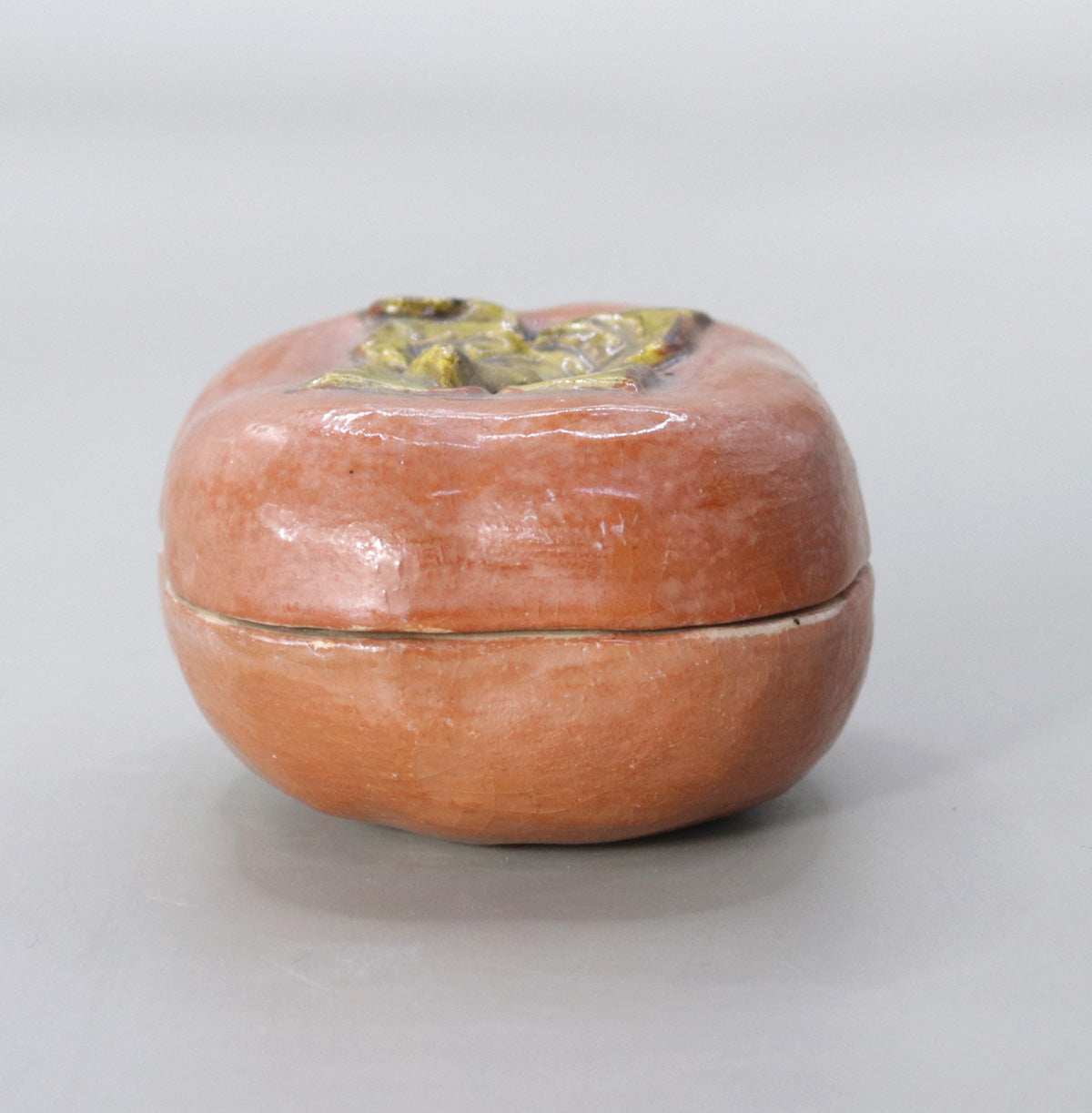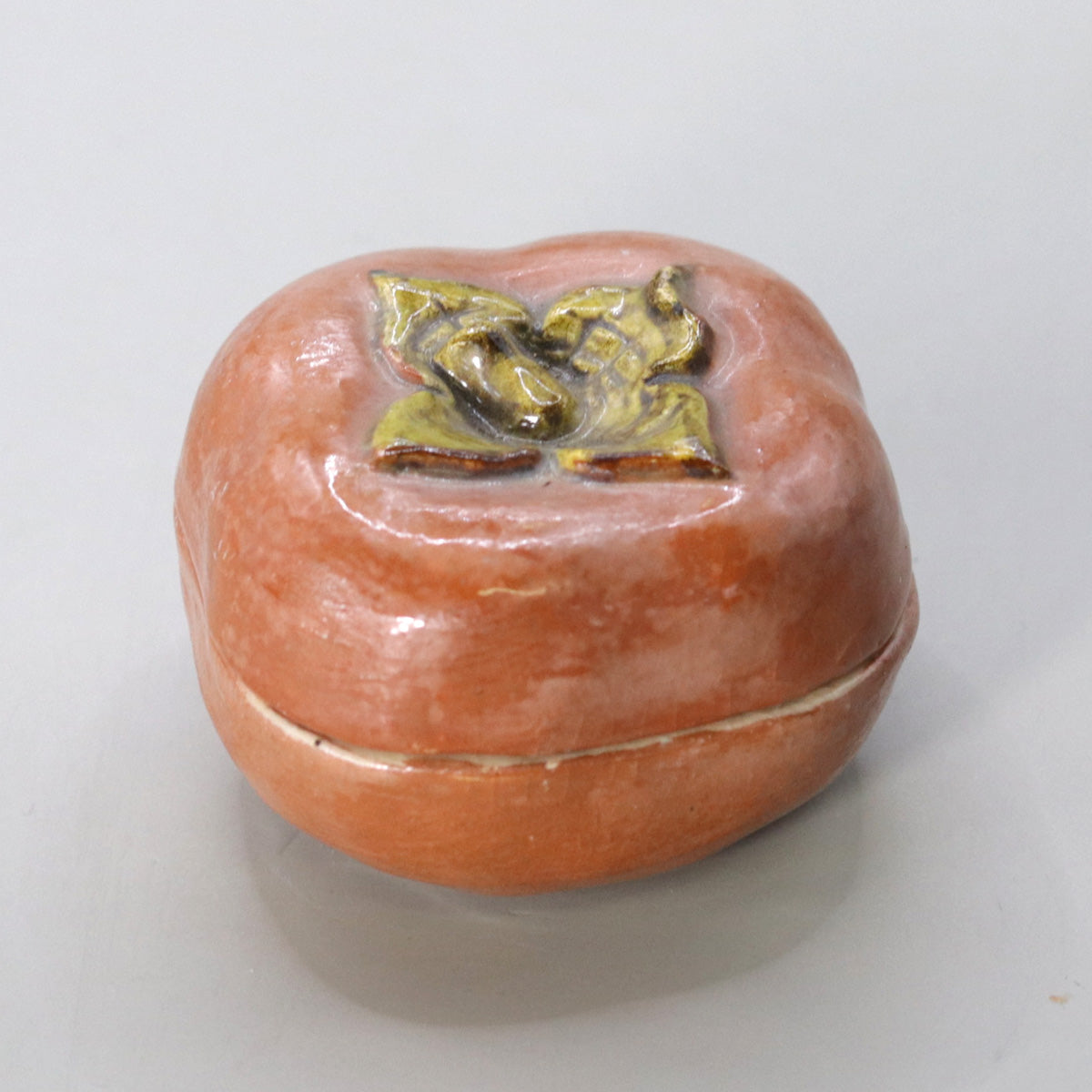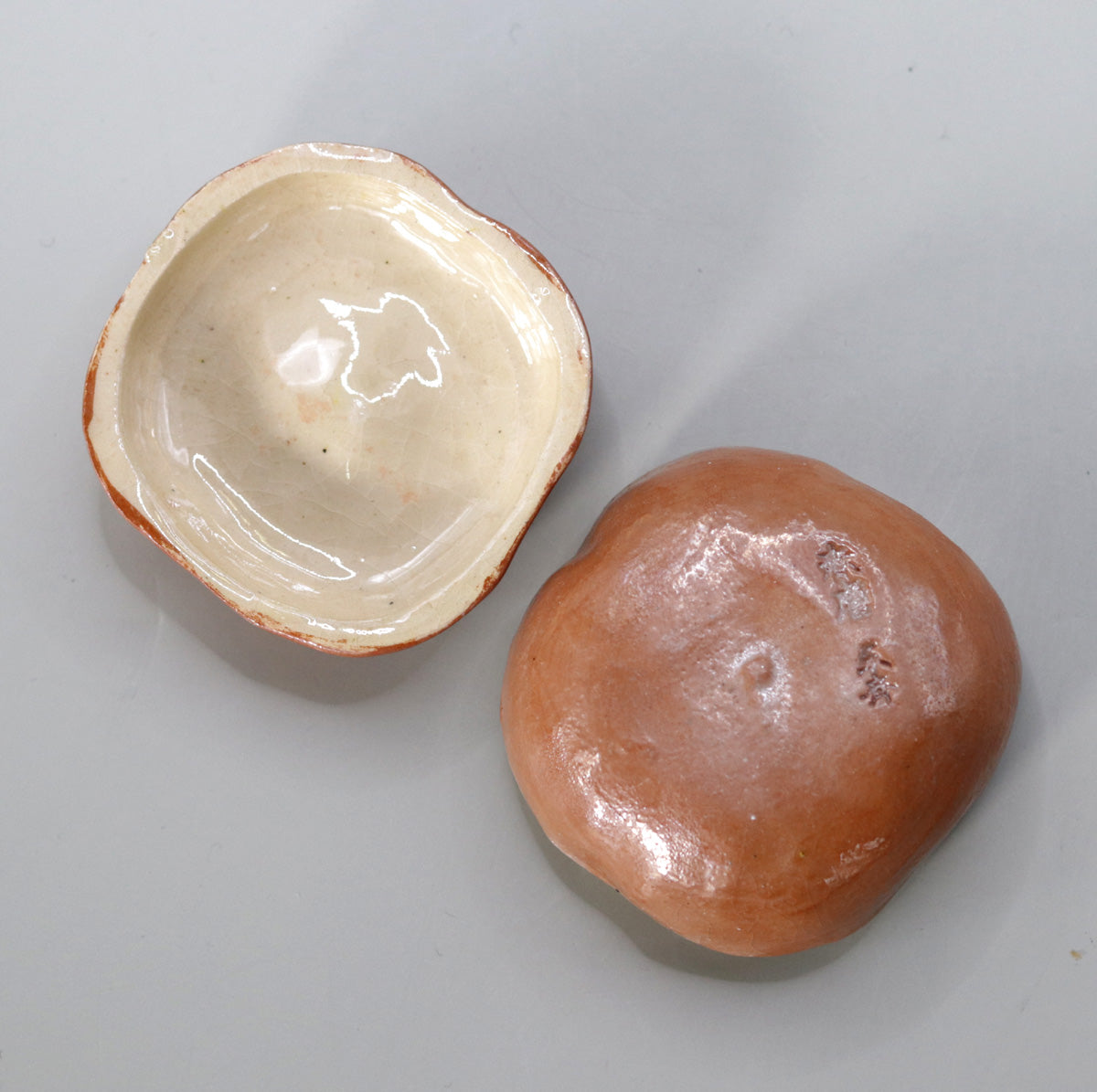Persimmon incense holder by Rakusai Onishi
Persimmon incense holder by Rakusai Onishi
Couldn't load pickup availability
Width: 5.7cm x 5.7cm Height: 3.8cm
Persimmon incense holder (Kaki-kogo) Made by Rakusai Onishi
--The crimson of autumn fruits is in my palm, and the scent of nectar is wrapped around me--
1. Overview of the work
This persimmon-shaped incense container was made by the Yatsushiro Onishi Rakusai of Akahada ware in Nara. It is about the size of a fist and realistically replicates the smooth tautness, soft indentations, and green calyx of a ripe persimmon. The body is divided into a lid and a body to hold the incense. The glossy, slightly transparent vermilion orange glaze is reminiscent of the fruit itself, absorbing the autumn sunlight.
2. Form and design
| part | Modeling and coloring | Points of the Award |
|---|---|---|
| pericarp | A thick layer of iron-red glaze is applied, leaving some areas with opacity and crazing. | Combining the freshness of a ripe persimmon with the refined beauty of natural markings |
| Calyx | Copper green glaze gives yellowish green to dark green color, and leaves are engraved with veins. | The complementary color contrast with the peel emphasizes the three-dimensional effect |
| Lid Alignment | The natural curve of the skin is used as a design to hide the steps. | A sense of unity that makes the dividing line of the incense holder unnoticeable |
3. Glaze tones and techniques
Color development of the iron-red glaze <br data-end="544" data-start="541">The iron in the akahada clay blends with the iron-red glaze to produce a warm crimson-orange color when fired in reduction at around 1240°C. The silver-gray color that appears in some areas is the result of kiln changes caused by fluctuations in oxidation-reduction, and is used to create an expression that reflects the subtle uneven coloring of the surface of a ripe persimmon.
Different applications of copper-green glaze <br data-end="668" data-start="665">The calyx is coated with feldspar glaze that uses copper as a coloring agent, creating a gradation from dark green in the pot to yellow-green in the lighter areas.
Sculptural Forming <br data-end="737" data-start="734">A unique technique in which two thin, cup-shaped pieces of base material are pulled on a potter's wheel, the ends are joined to create a sphere, and then the unevenness is smoothed out by hand twisting. This ensures sufficient internal space while achieving a balance that does not compromise the plumpness of the exterior.
4. Persimmons and the Tea Ceremony - Cultural Background
Symbol of Autumn <br data-end="874" data-start="871">Persimmons are also known as Japan's national fruit, and are such a representative fruit of the season that the saying goes, "When the fruit turns persimmon pink, autumn has arrived."
Famous Teahouse Painting "Six Persimmons"
The Zen painting "Six Persimmons" is a representative work that is hung at autumn tea ceremonies, and has been treasured as a painting that embodies the concept of wabi-sabi.
Offerings for Moon Viewing and Harvest <br data-end="1107" data-start="1104">At the "moon viewing" ceremony on the fifteenth night of the full moon, persimmons are offered as offerings along with chestnuts and potatoes, and they are also commonly used at moon-viewing tea ceremonies.
For this reason, persimmon incense containers are especially popular before opening the hearth from mid-autumn until frost , as a way to celebrate the harvest and pray for bountiful harvests and safety for guests.
5. Arrangements at the tea ceremony
| Tea ceremony season | Tool group proposal | Recommended incense | effect |
|---|---|---|---|
| Mid-autumn/Harvest Moon (the 15th night) | Scroll "Clear Wind and Bright Moon", Flowers: Usu and Amago, Tea Bowl: Ido | Kara piece | It reminds me of persimmons changing colour under the moonlight. |
| Kannazuki - Opening the Furnace | Scroll "Fukujuumi-myo" Flower: Persimmon twig | Incense stick "Zuiun" | Celebrating the harvest and the new hearth fire |
| Shimotsuki/Shigure Tea Ceremony | Scroll "Once in a lifetime" Flower: Camellia | Sandalwood + Borneo | Expressing the luster of persimmons washed by rain |
6. Mr. Onishi Rakusai's ceramics philosophy
Onishi Rakusai believes in "reflecting the climate and auspicious signs of Nara in modern tea pottery," and continues to energetically create works using seasonal fruits (persimmons, eggplants, etc.) as themes, in addition to deer, temple bells, and shibori. In this work, he makes use of the soft texture of the akahada clay, while condensing the vitality of the fruit through the contrast between red iron glaze and green copper glaze. He has achieved a high level of fusion between the aesthetic appeal of a palm-sized sculpture and the functional beauty of an incense holder.
7. Summary
The "Kaki Kogo" is a tea utensil that gently encapsulates the feelings of gratitude that come with the autumn harvest. When you open the lid, sweet incense smoke drifts out, and the fine crazing reflected in the scarlet orange peel speaks of the autumn colors that deepen with time. Please use it at the turning point of the seasons, and enjoy the warm earthiness and fresh colors that are unique to Onishi Rakusai.
A conversation with Rakusai Onishi – High-end pottery specialty store [Amagi-do]
Share
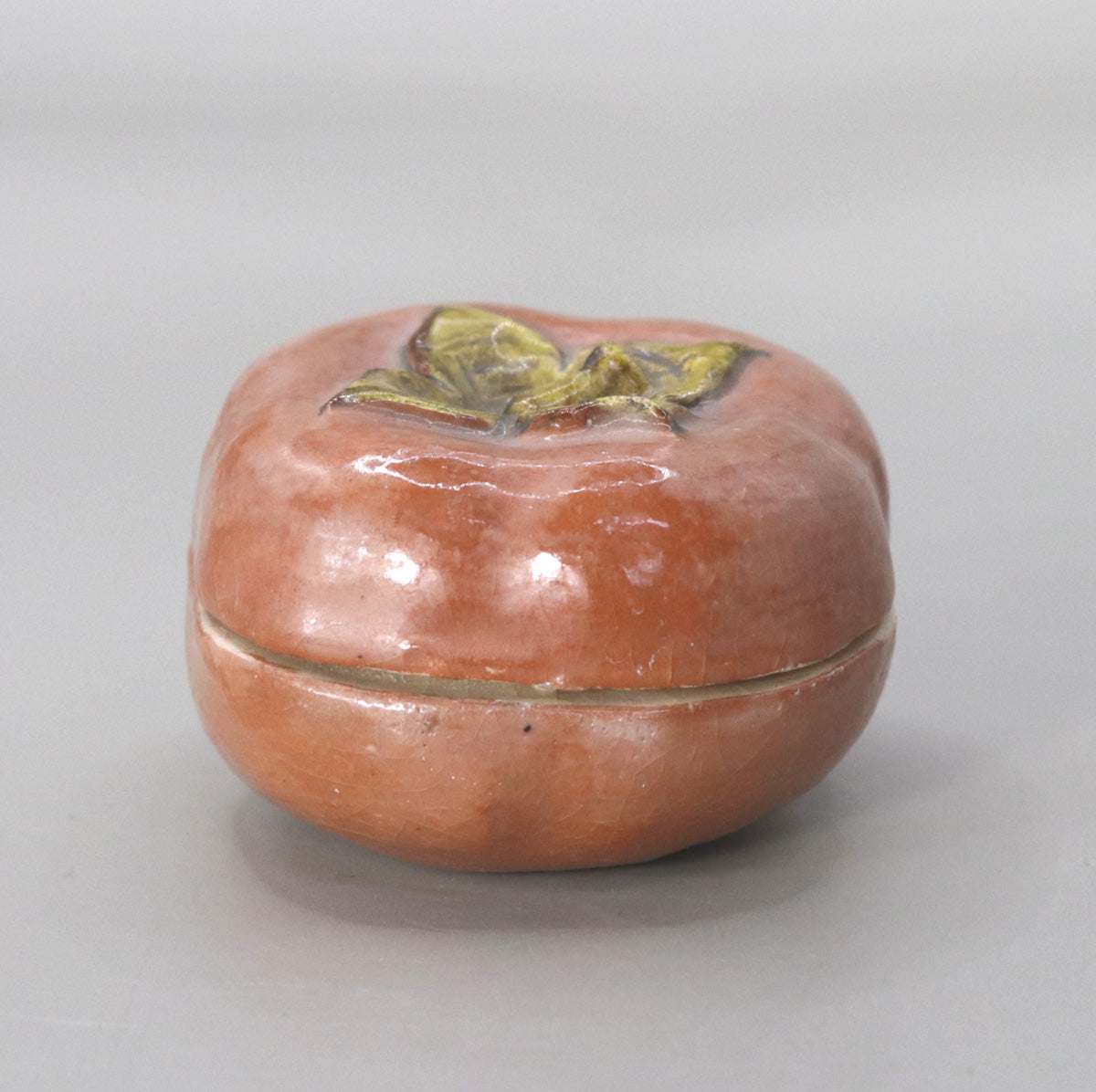
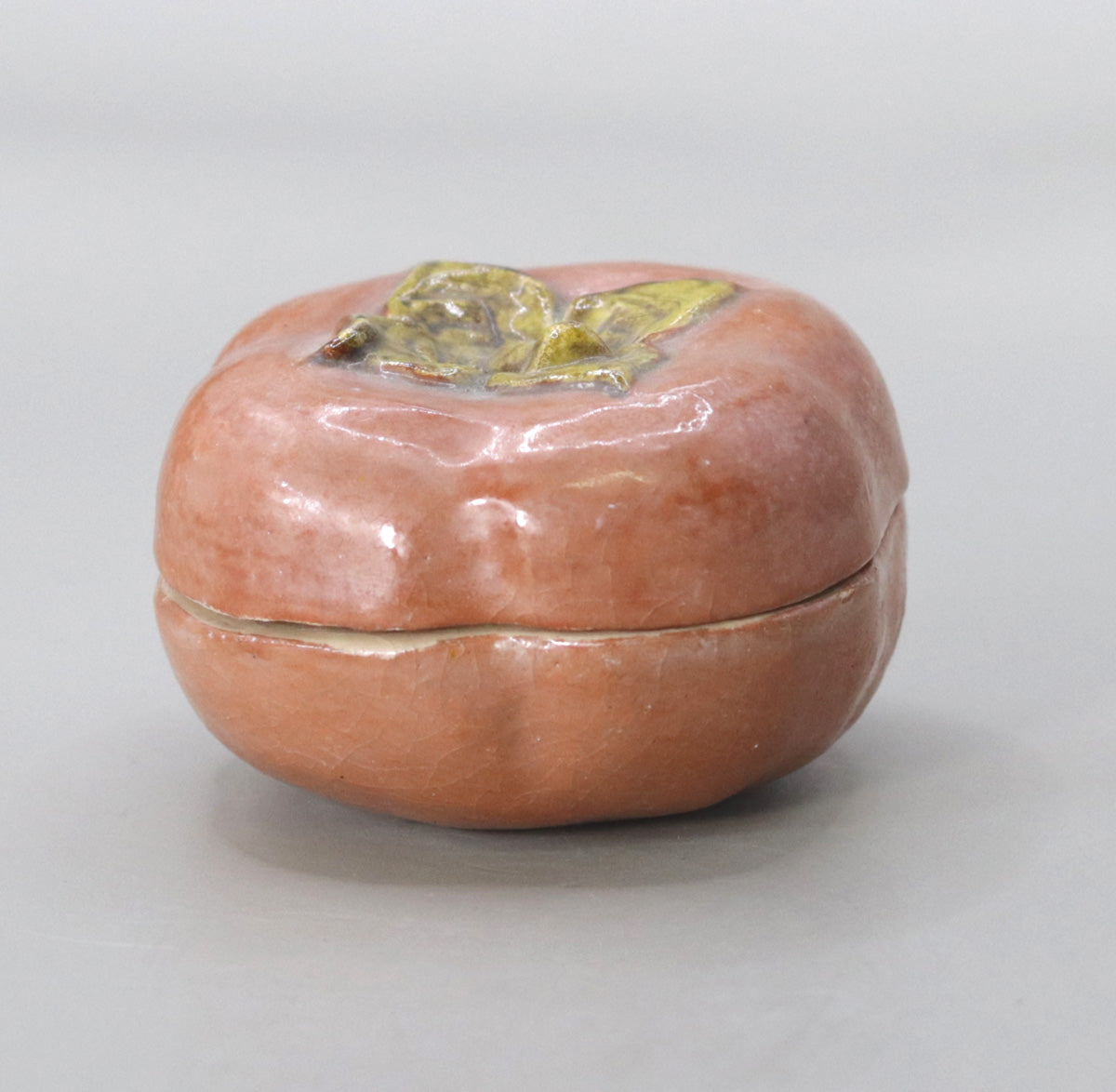

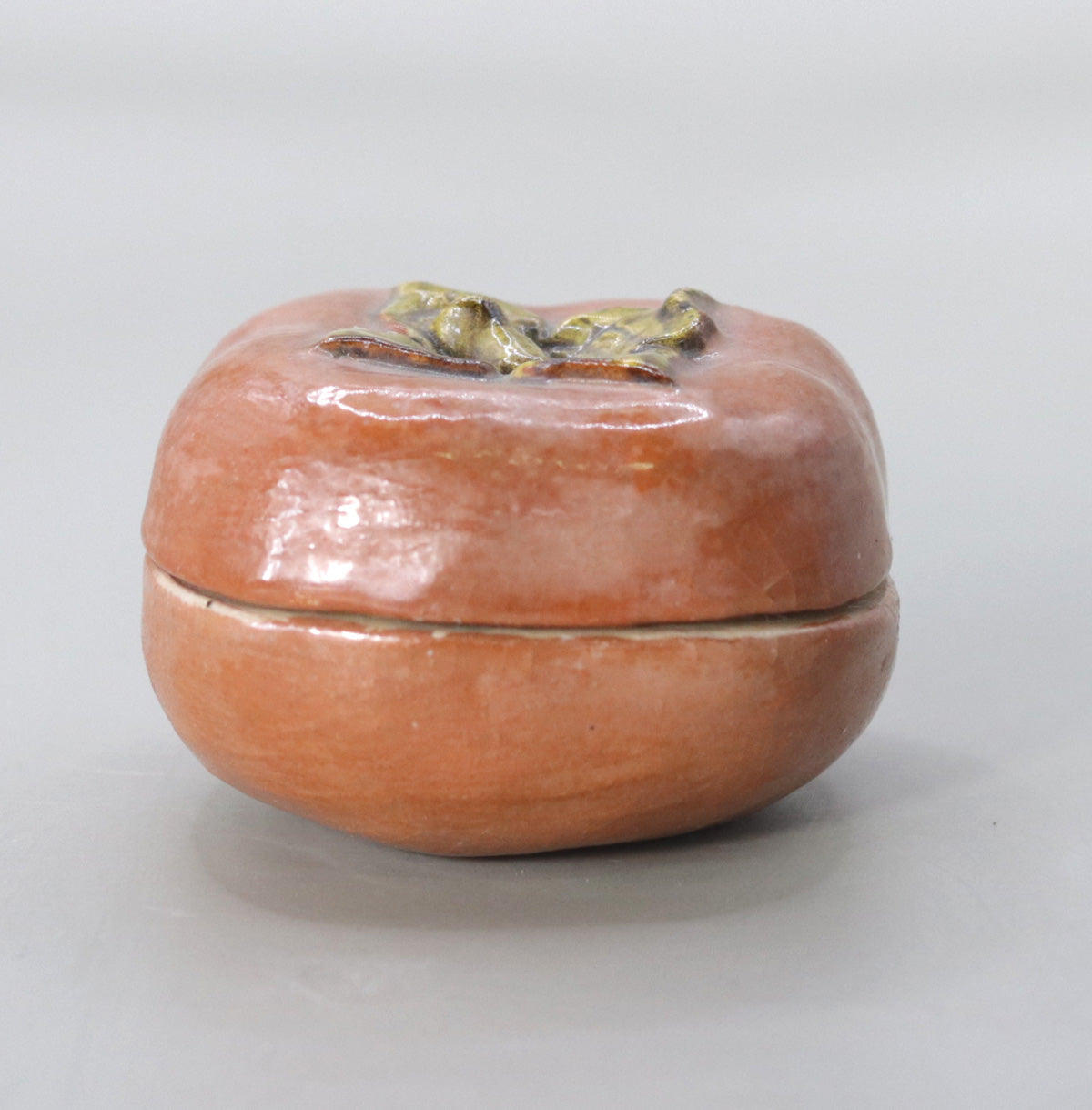
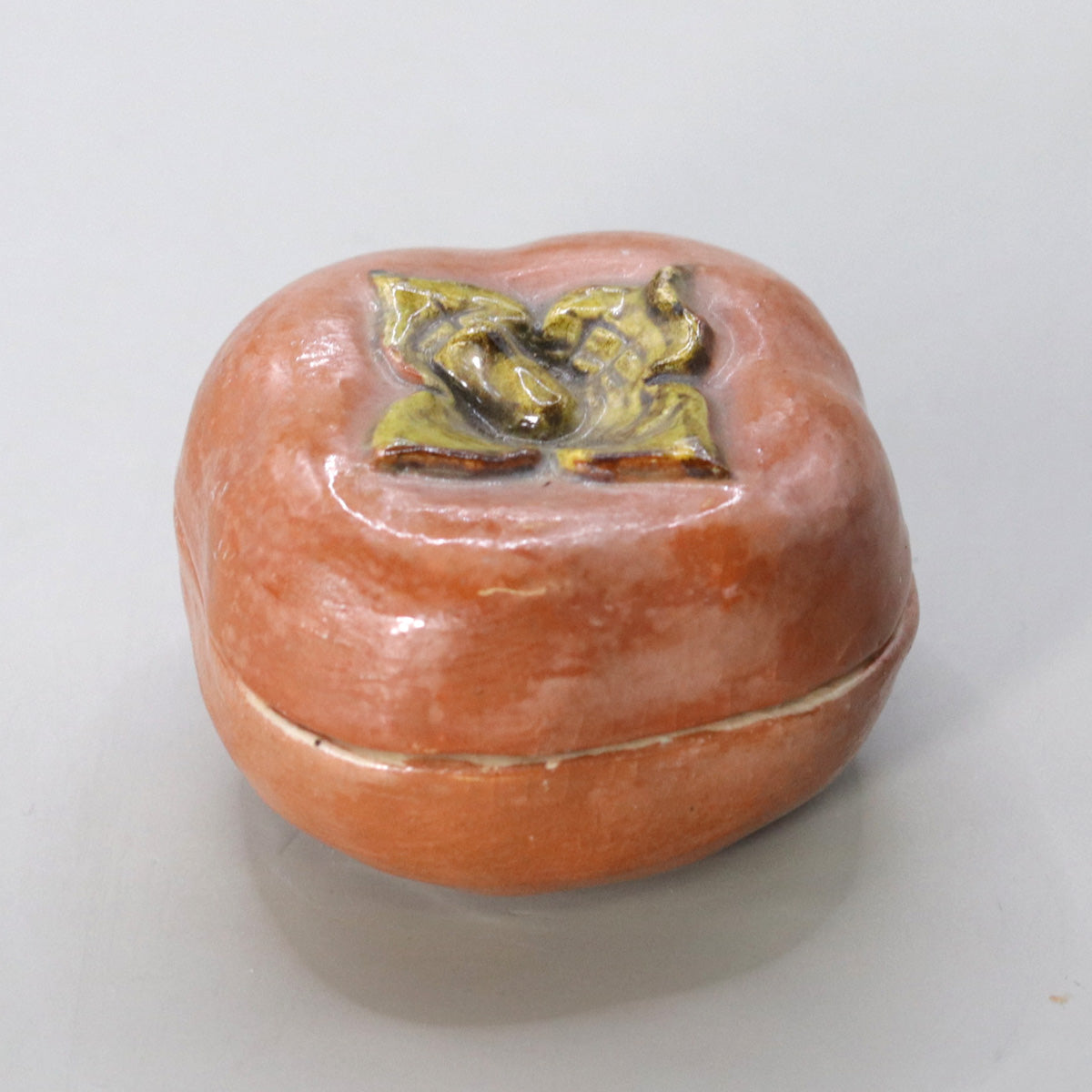
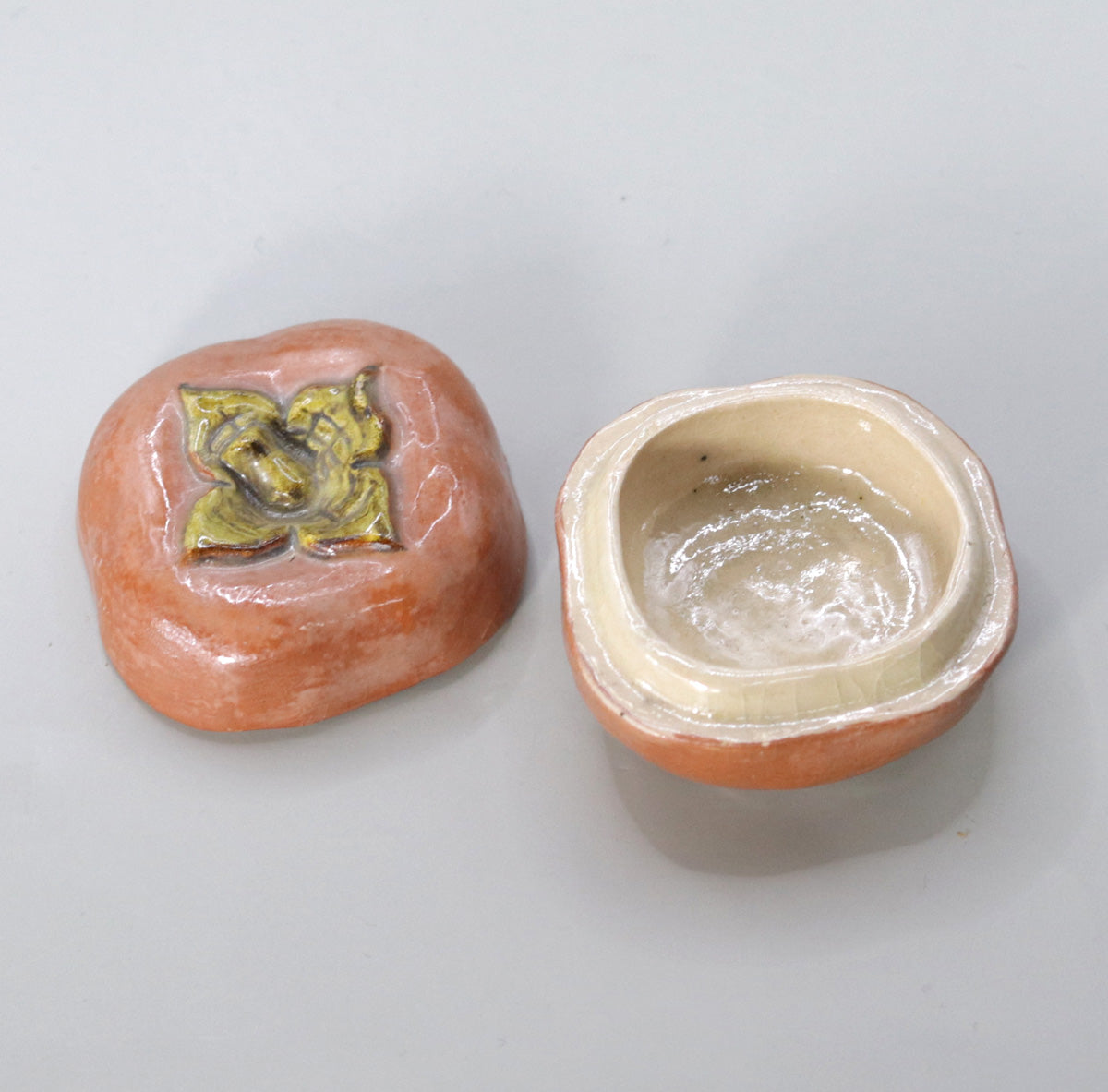
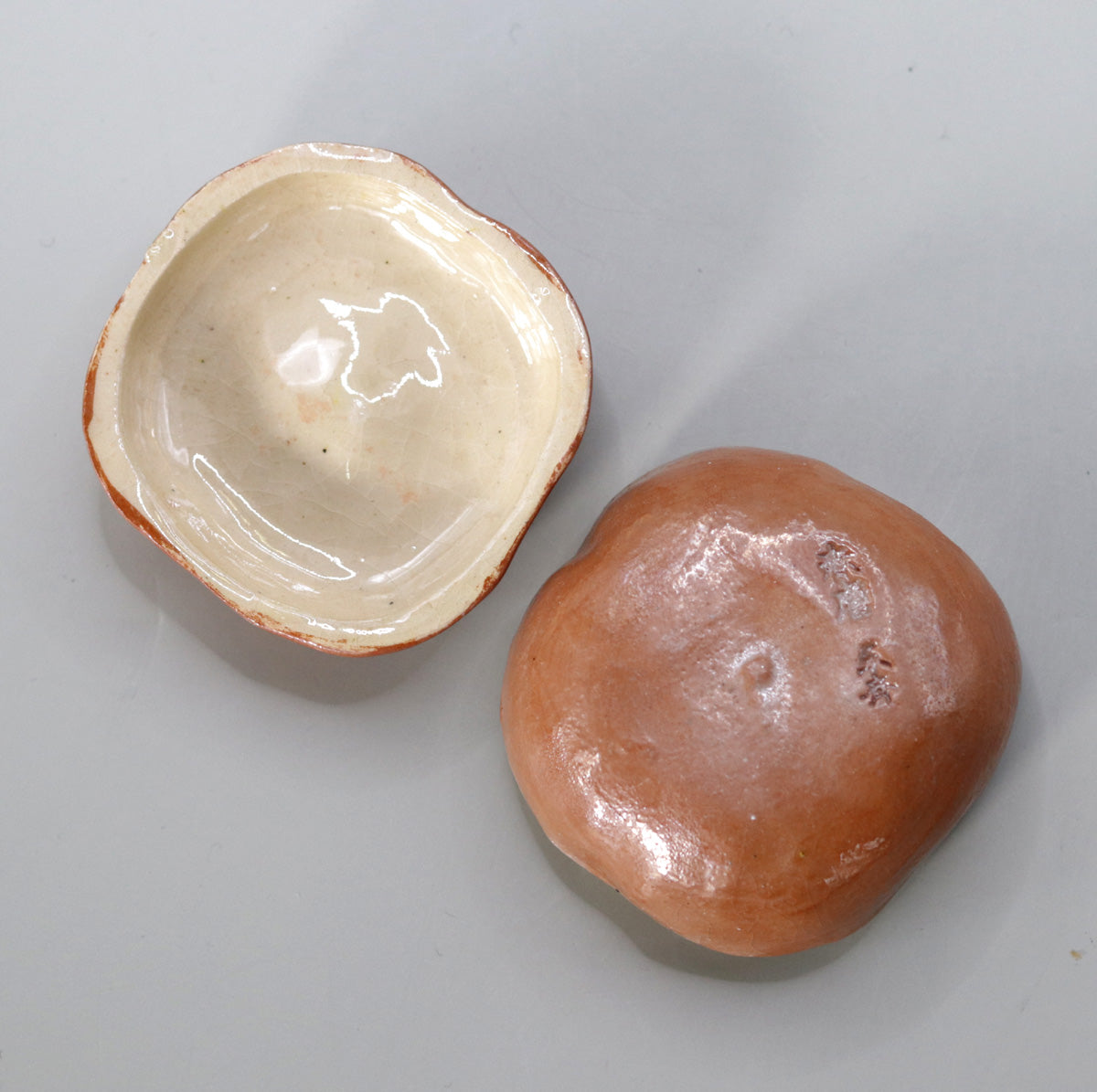
Multi-Column
-
[I will send it to you quickly and carefully]
We carefully package each product in a way that suits it best.
Also, delivery times vary depending on the piece (vessel, etc.).
Items that already come with a box will be shipped within 1-3 days of the order date.
For items that require a box to be made after your order, it will take approximately 30 days for production to be completed and then shipped.
In either case, once we have confirmed your order, we will contact you by email to inform you of the delivery date.
-
[Requests when purchasing pottery]
Even products that look the same may differ slightly in color, shape, size, etc.
The way the glaze is used, the power of the kiln, the firing method, the season, and the humidity also affect the appearance of the pottery.
Please understand the individuality of each piece of pottery and enjoy the unique warmth of handmade.



